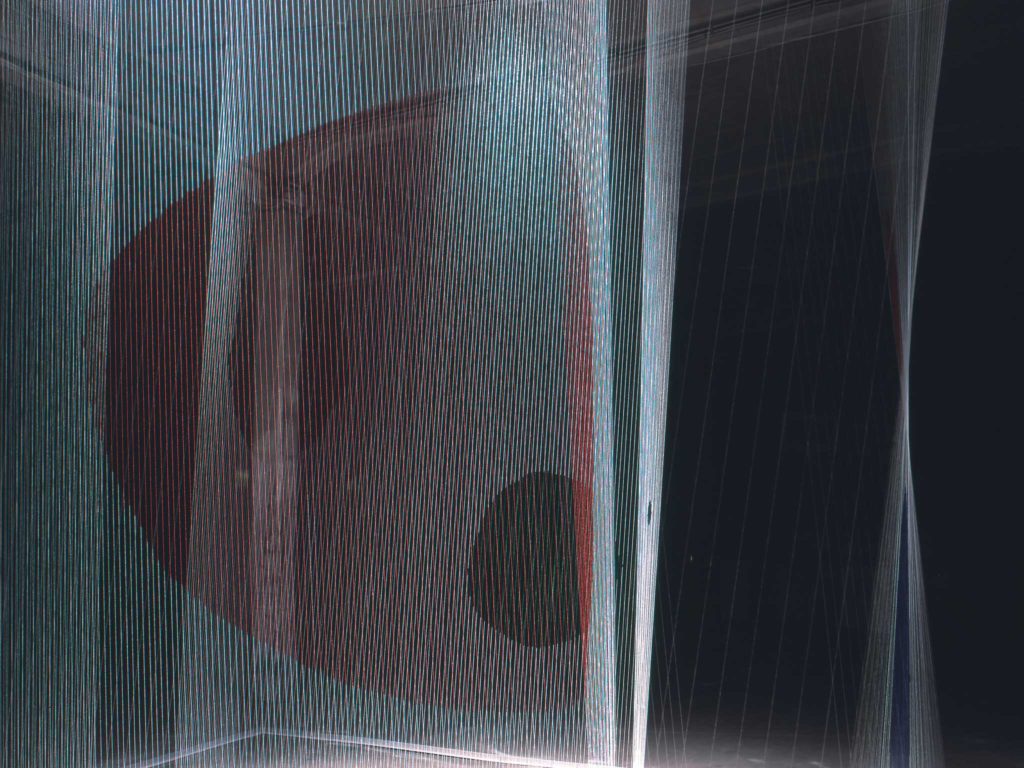
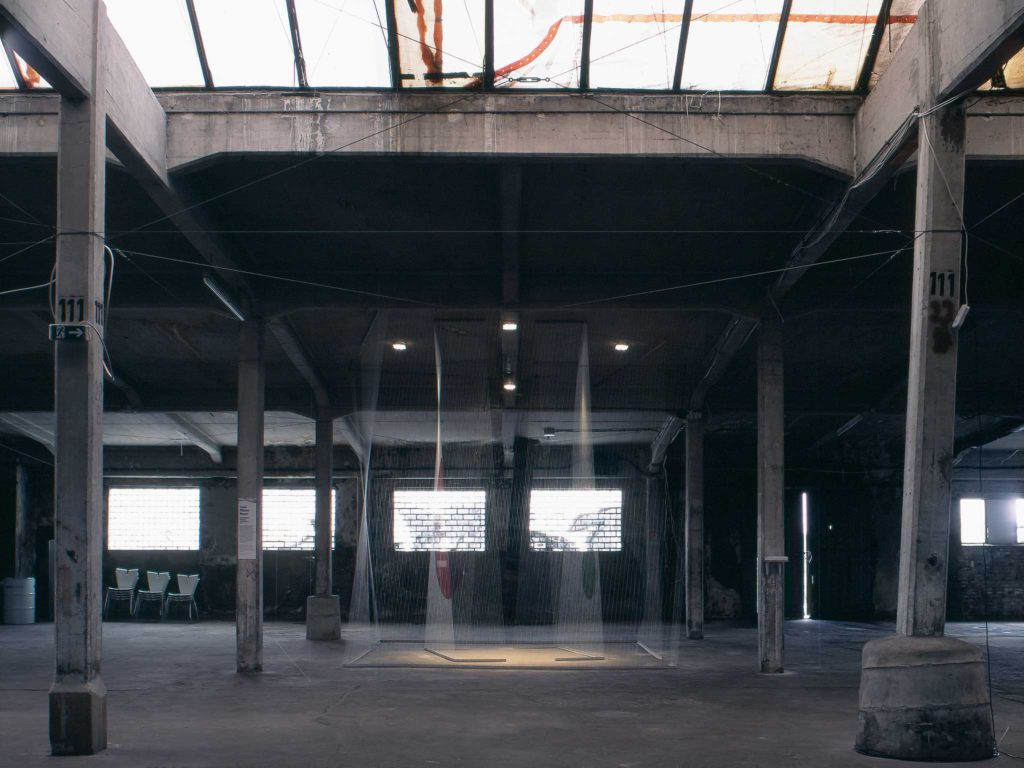
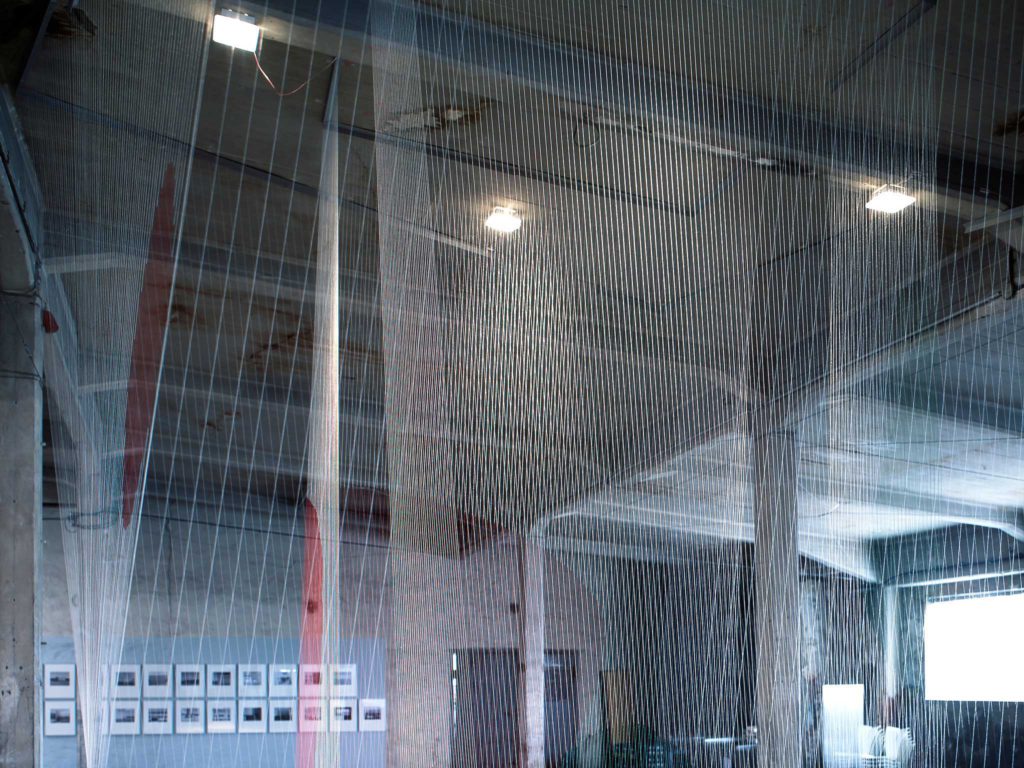
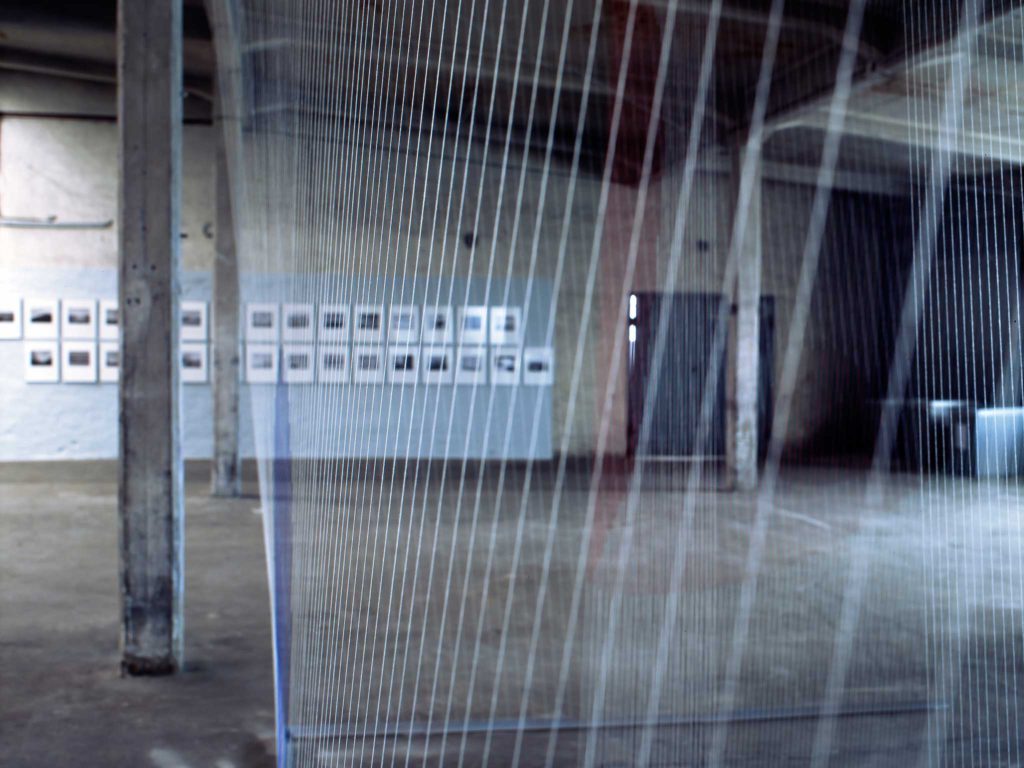
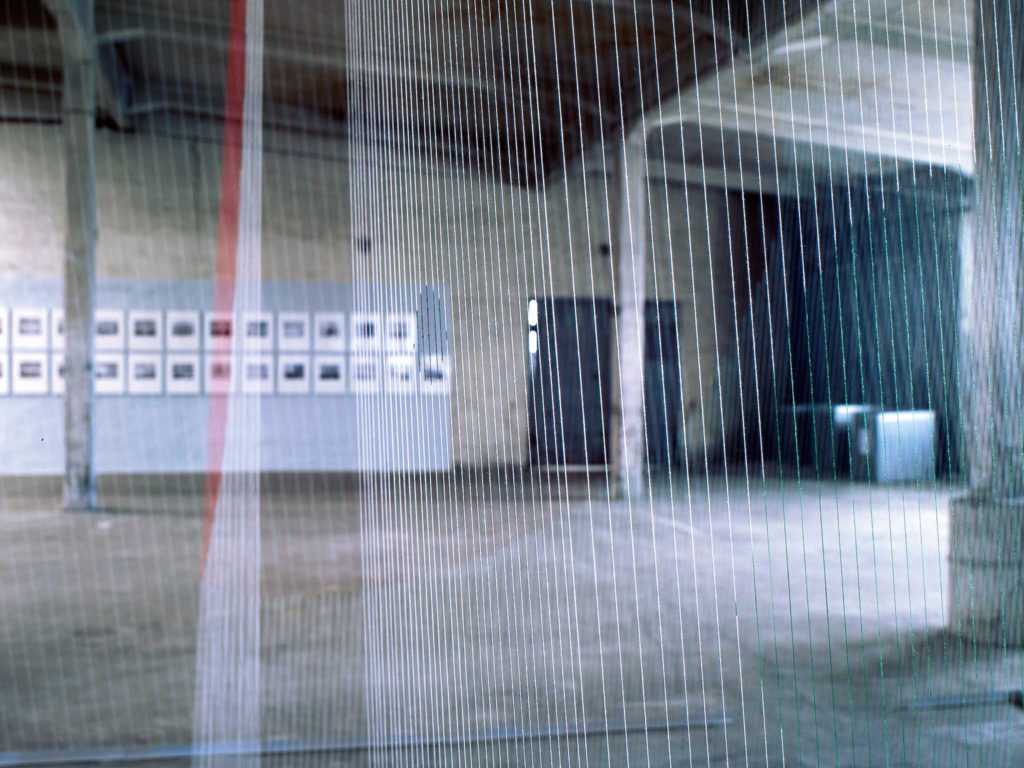
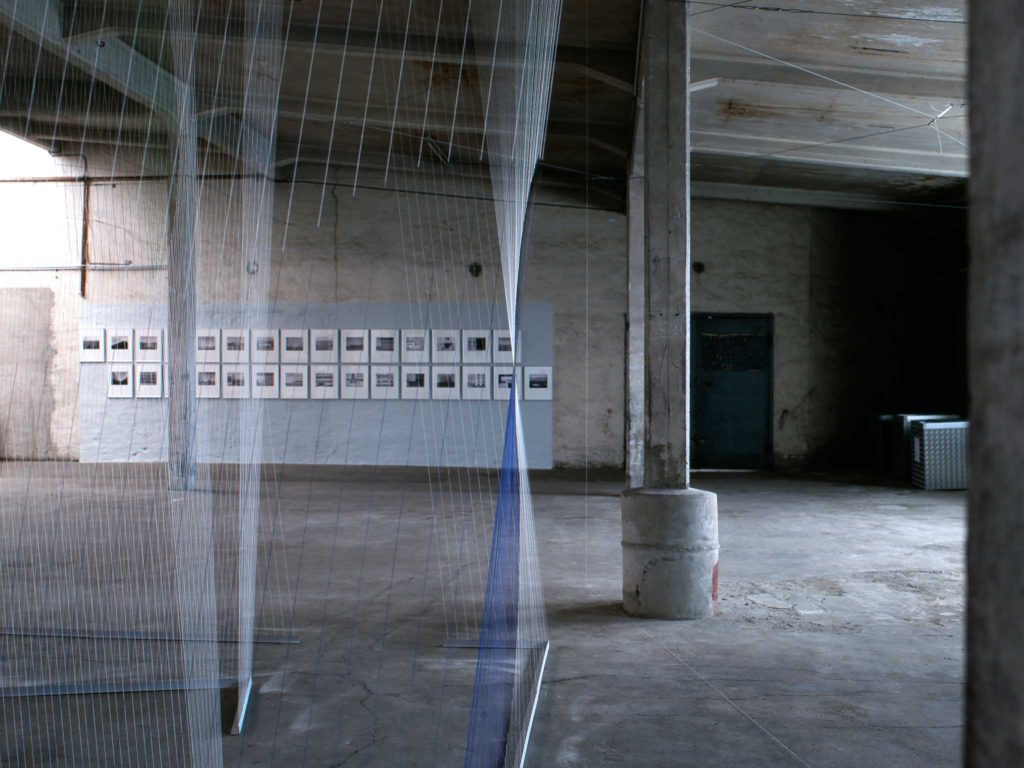
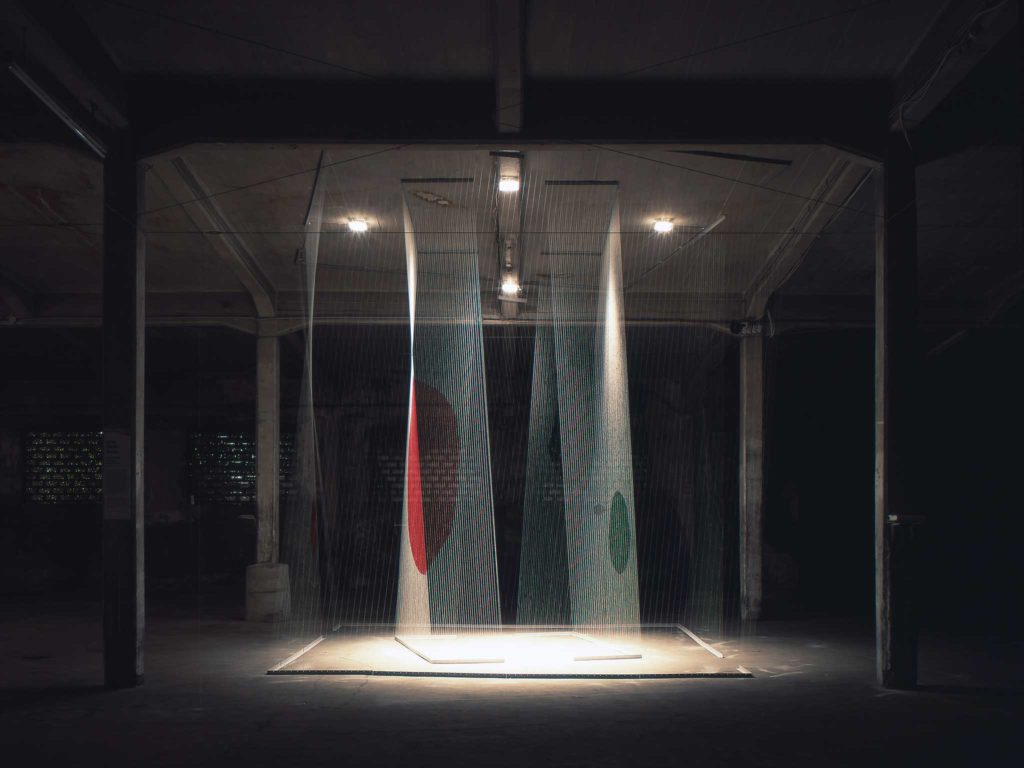
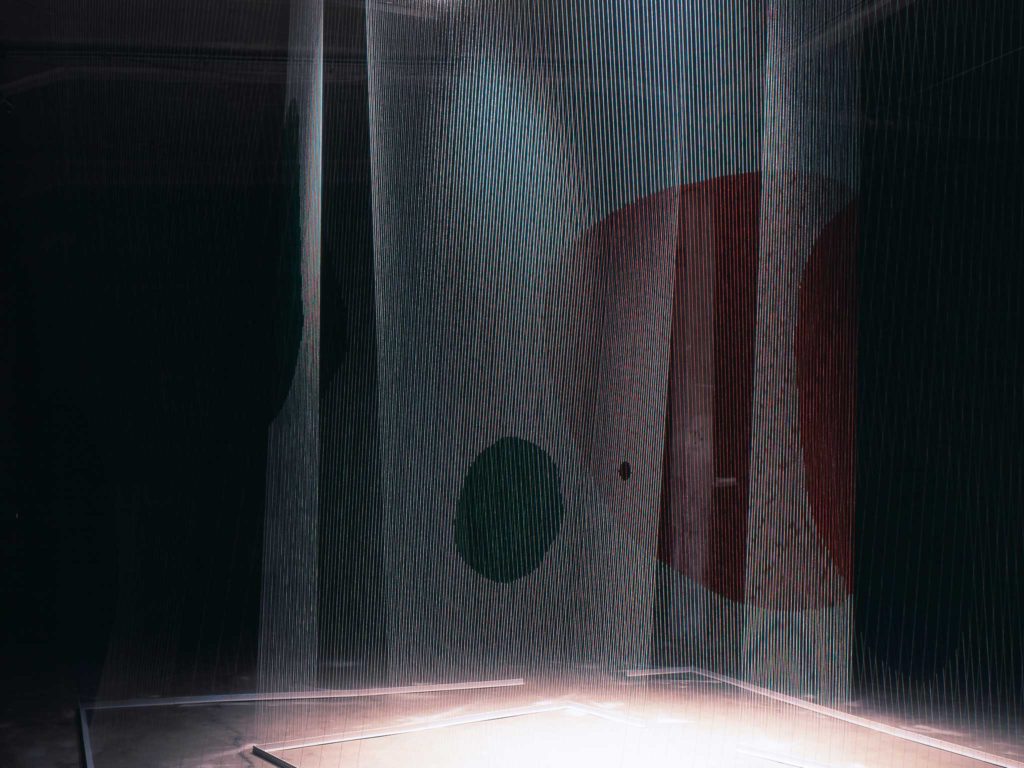


“Line, surface, space“ is an installation that plays with the perception of space. A fragile structure of threads stretching from floor to ceiling seems to dissolve in space and recompose to ever new appearances. Varying between transparent and closed surfaces, the spatial perception changes with each step taken through the installation. It is erected on the plan of three interlocking twisted squares of different sizes. While the threads of the outer square suggest the edges of an imaginary space, the more denselyarranged threads towards the middle seem to create surfaces. Ordinary threads evolve into lines in space that create surfaces which seem to comprise spaces. Lines and surfaces overlap in various constellations in space. Thus a fragile structure evolves on the plan of the three squares that constantly changes its appearance on approaching, walking around or through it, creating ever new impressions.
The structure blurs the thresholds between line, surface and space. It offers a new perception of these three ideas and a new understanding of how much needs to be defined in order to make them perceivable. Impressions when moving through the installation are complex; the ambiguous overlapping of the threads - as single elements hardly visible - seems to make the space even more perceivable though.
Financial restrictions encourage us to question essential principles that are usually taken for granted and see them as opportunities to develop a new architecture. In the installation “line, surface, space“ new spatial experiences are created by providing ordinary woollen threads with a new use.
The Japanese artist Nobuko Watabiki painted some of the threads, so that colourful areas materialize on the surfaces by the interaction of the threads. Painted areas overlap and keep on changing their composition as one progresses through the installation, affecting transparency and perception of the surfaces and the space